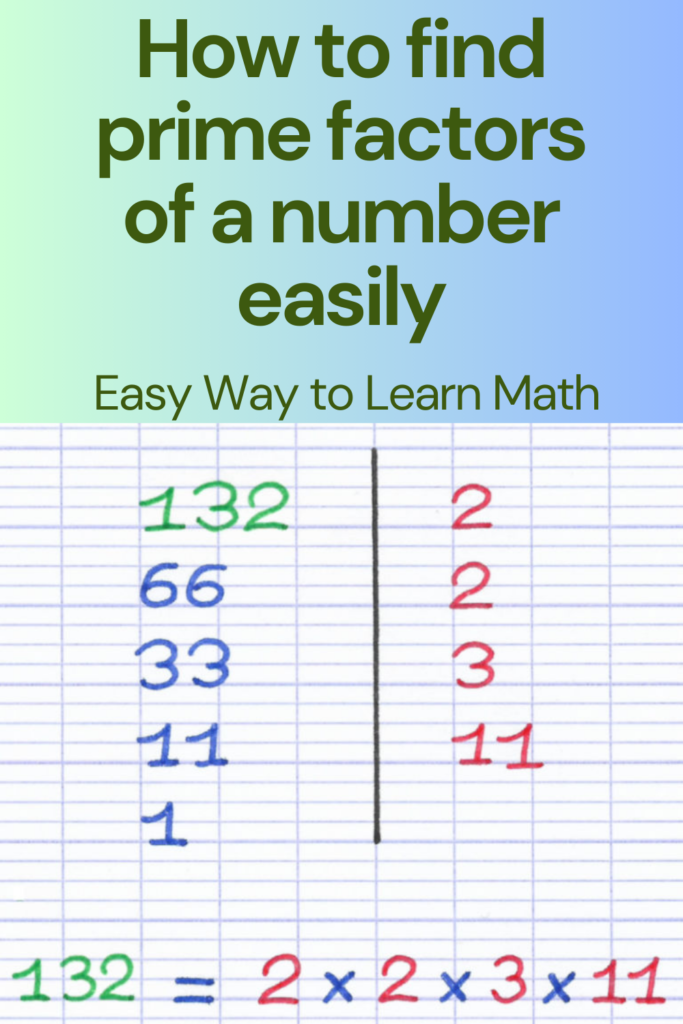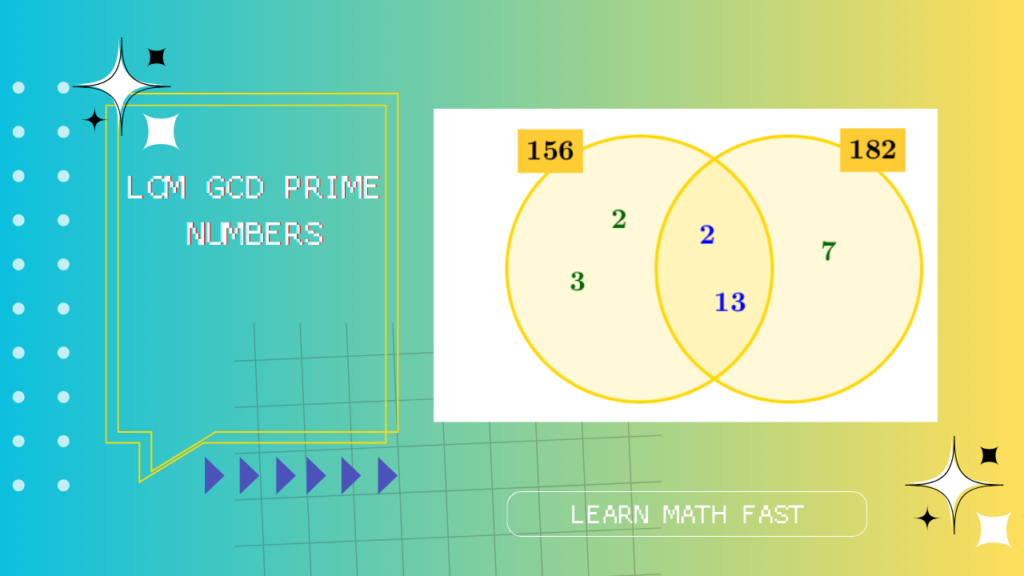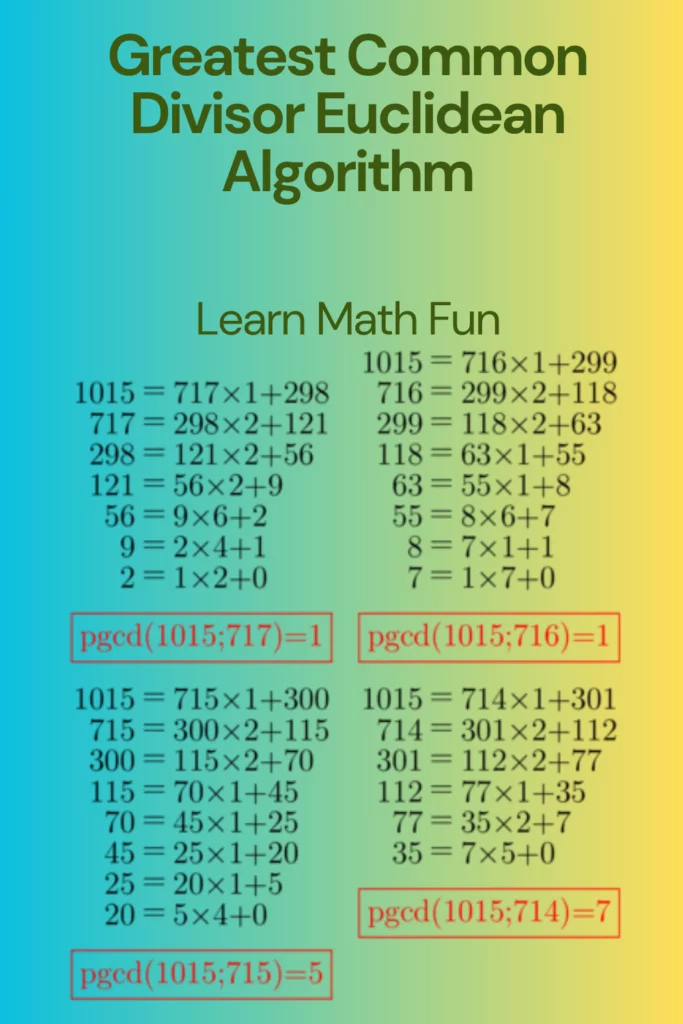How to find prime factors of a number easily – Course

Prime numbers are one of the most fundamental concepts in mathematics. They are the building blocks of all other numbers and they have many important applications in cryptography,computer science and other fields.
Knowing how to find the prime factors of a number can be useful in a variety of situations. It can help you to:
- Simplify fractions
- Find the least common multiple of two or more numbers
- Determine if a number is divisible by another number
- Solve certain mathematical problems
Prime factors are like the DNA of numbers, revealing their hidden secrets and unique makeup. Whether you’re a math enthusiast or just curious about the magic behind numbers, we’re about to demystify the art of finding prime factors in a way that’s not only simple but downright fascinating.
What is factors in math
In mathematics, a factor of a number is a number that divides evenly into that number without leaving a remainder. For example, the factors of 12 are 1, 2, 3, 4, 6, and 12. This means that each of these numbers can divide into 12 evenly.
Example: 5y
5y is the product of 5 and y. So, 5 and y are factors.
12 is the product of 4 and 3: 12 = 3 × 4
3 and 4 are factors of 12.
7 is the product of 7 and 1: 7 = 7 × 1
7 and 1 are factors of 7.
2xy = 2 × x × y; 2, x, and y are factors of 2xy.
How to find the factors of a number
There are a few ways to find the factors of a number. One way is to simply start with 1 and divide it into the number. If the division is even, then 1 is a factor of the number. Continue dividing by the next integer, and if the division is even, then that integer is also a factor of the number. Stop when you reach the number itself.
Another way to find the factors of a number is to use a prime factorization table. A prime factorization table is a table that shows the prime factorization of all numbers up to a certain number. The prime factorization of a number is the product of all of the prime numbers that divide evenly into that number.
To use a prime factorization table to find the factors of a number, simply look up the number in the table. The prime factors of the number are the numbers that are listed below the number in the table.
Why are factors important?
Factors are important in mathematics because they can be used to simplify expressions, solve equations, and understand other mathematical concepts. For example, factors can be used to simplify fractions, find the greatest common factor (GCD), and find the least common multiple (LCM) of two numbers.
- Simplifying fractions: The fraction 12/16 can be simplified by dividing the numerator and denominator by 4. This gives us the fraction 3/4.
- Finding the greatest common factor (GCD): The GCD of two numbers is the largest number that is a factor of both numbers. The GCD of 12 and 16 is 4.
- Finding the least common multiple (LCM): The LCM of two numbers is the smallest number that is a multiple of both numbers. The LCM of 12 and 16 is 48.
- Solving equations: Factors can be used to solve equations by factoring the left-hand side of the equation. For example, the equation x^2 – 6x + 8 = 0 can be factored as (x – 2)(x – 4) = 0. This means that either x – 2 = 0 or x – 4 = 0. Therefore, the solutions to the equation are x = 2 and x = 4.
What Is Prime Factors
The prime factors of a number are the prime numbers that can be multiplied together to get that number. Prime numbers are numbers that have exactly two factors: 1 and themselves.
Example 1: The factors of 12 are: 1, 3, 4, 6, 12
The prime factors of 12 are: 2, 3
Example 2: The factors of 16 are: 1, 4, 8, 16
The only prime factor of 32 is 2.
How to find the prime factors of a number
There are a number of ways to find the prime factors of a number, but two of the most common methods are the prime factorization method and the factor tree method.
Prime factorization method
The prime factorization method is a straightforward way to find the prime factors of a number. To use this method, simply start by dividing the number by the smallest prime number (2). If the number is divisible by 2, then 2 is a prime factor of the number. If the number is not divisible by 2, then divide it by the next smallest prime number (3). Continue this process until the number cannot be divided by any prime numbers. The prime factors of the number are the prime numbers that you used to divide the number.
Factor tree method
The factor tree method is a more visual way to find the prime factors of a number. To use this method, draw a line down the middle of a piece of paper. Write the number you want to factor at the top of the line. Then, find two factors of the number and write them below the line. Continue this process until you reach prime numbers. The prime factors of the number are the prime numbers that you wrote at the bottom of the factor tree
Example 1: 8190
8190 ÷ 2 = 4095
4095 ÷ 3 = 1365
1365 ÷ 3 = 455
455 ÷ 5 = 91
91 ÷ 7 = 13
13 ÷ 13 = 1
8190 = 2 × 3² × 5 × 7 × 13
The prime factors of 8190 are: 2, 3, 5, 7, 13
Example 2: 360
360 ÷ 2 = 180
180 ÷ 2 = 90
90 ÷ 2 = 45
45 ÷ 3 = 15
15 ÷ 3 = 5
5 ÷ 5 = 1
360 = 2³ × 3² × 5
The prime factors of 360 are: 2, 3, 5
Prime factors of 24
Let’s find the prime factors of 24 using the prime factorization method:
24 / 2 = 12 12 / 2 = 6 6 / 2 = 3 3 / 3 = 1
Since we cannot divide 1 by any prime numbers, 24 = 2 × 2 × 2 × 3,the prime factors of 24 are 2, 2, 2 and 3.
Prime factors of 16
16 ÷ 2 = 8
8 ÷ 2 = 4
4 ÷ 2 = 2
2 ÷ 2 = 1
The prime factors of 16 are 2, 2, 2, and 2, or simply written as 2^4, where the exponent 4 indicates that there are four 2s multiplied together.
Prime factors of 27
- Start with the smallest prime number, 2.
- Divide 27 by 2. 27 is not divisible by 2, so move on to the next prime number, 3.
- Divide 27 by 3. 27 is divisible by 3, so divide it by 3 and get 9.
- Divide 9 by 3. 9 is divisible by 3, so divide it by 3 and get 3.
- 3 is a prime number, so we have found all of the prime factors of 27.
The prime factors of 27 are 3, 3 and 3.
Prime factors of 15
Start by dividing 15 by the smallest prime number, 2. 15 is not divisible by 2, so we move on to the next prime number, 3.
Divide 15 by 3. 15 is divisible by 3, so 3 is a prime factor of 15. We can write this as 15 = 3 * 5.
Now, you have a quotient of 5. Check if 5 is a prime number. It is indeed prime because it’s only divisible by 1 and itself.
So, the prime factors of 15 are 3 and 5 because 15 = 3 × 5.
In this case, the prime factors are 3 and 5, and the process was relatively simple since 15 is a small number.
Prime factors of 36
36 ÷ 2 = 18
18 ÷ 2 = 9
9 ÷ 2 = 4.5
9 ÷ 3 = 3
Now, you have reached a quotient of 3, which is a prime number itself. You can’t divide it further.
So, the prime factors of 36 are 2, 2, 3, and 3. You can write this as:
36= 2 × 2 × 3 × 3 = 2² × 3²
Prime factors of 48
To find the prime factorization of 48 using trial and division, we would first divide 48 by 2.
48 / 2 = 24
We can continue to divide 24 by 2 until we reach 1.
24 / 2 = 12 12 / 2 = 6 6 / 2 = 3 3 / 2 = 1
The prime factorization of 48 is 2 × 2 × 2 × 2 × 3.
Prime factors of 42
42 / 2 = 21 21 / 3 = 7 7 / 7 = 1
The prime factors of 42 are 2, 3, and 7.
Another way to find the prime factors of a number is to use a prime factorization table. A prime factorization table is a table that lists all of the prime numbers up to a certain number. To find the prime factors of a number using a prime factorization table, we simply divide the number by each prime number in the table until we reach a prime number that divides evenly into the number.
The following table shows the prime factorization of 42 using a prime factorization table:
| Prime number | Divides 42 evenly? |
| 2 | Yes |
| 3 | Yes |
| 5 | No |
| 7 | Yes |
| 11 | No |
| 13 | No |
| 17 | No |
| 19 | No |
| 23 | No |
The prime factorization of 42 is 2 × 3 × 7.
Prime factors of 30
Divide 30 by each prime number in the list, starting with the smallest prime number:
30 / 2 = 15
15 / 3 = 5
5 / 5 = 1
Since 1 is not a prime number, the prime factors of 30 are 2, 3, and 5.
Prime factors of 84
84 / 2 = 42 42 / 2 = 21 21 / 3 = 7 7 is a prime number, so we stop here.
The prime factors of 84 are 2, 3, and 7.
Prime factors of 100
100 ÷ 2 = 50 50 ÷ 2 = 25 25 ÷ 5 = 5 5 ÷ 5 = 1
100 = 2 × 2 × 5 × 5,the prime factors of 100 are 2, 2, 5, and 5.
Prime factors of 28
28 ÷ 2 = 14
14 ÷ 2 = 7
We’ve reached 7, which is a prime number itself. You can’t divide it any further.
So, the prime factors of 28 are 2 and 7.
Prime factors of 80
80 / 2 = 40 40 / 2 = 20 20 / 2 = 10 10 / 2 = 5 5 is a prime number, so we stop here. 80 = 2 × 2 × 2 × 2 × 5
The prime factors of 80 are 2, 2, 2, 2, and 5.
Prime factors of 96
96 ÷ 2 = 48
48 ÷ 2 = 24
24 ÷ 2 = 12
12 ÷ 2 = 6
6 ÷ 2 = 3
The prime factors of 96 are 2, 2, 2, 2, 2, 3.In prime factor notation, it’s expressed as 2^4 * 3.
Prime factors of 700
Divide it by the smallest prime number, which is 2. 700 ÷ 2 = 350.
Divide 350 by 2 again. 350 ÷ 2 = 175.
Continue dividing by 2 until you can’t divide evenly anymore.
175 ÷ 2 = 87.5 (Not a whole number, so stop here with 2 as a factor).
Now, move on to the next prime number, which is 3. Divide 175 by 3.
175 ÷ 3 = 58.33 (Not a whole number, so stop here with 3 as a factor).
Next, try 5, another prime number.
175 ÷ 5 = 35.
Continue with 5 as a factor:
35 ÷ 5 = 7.
Finally, you have reached a quotient of 7, which is a prime number itself.
So, the prime factors of 700 are 2, 2, 5, 5, and 7.
You can express this as 700 = 2² × 5² × 7.
Prime factors in 2024
Divide 2023 by 2. 2023 is not divisible by 2, so 2 is not a prime factor in 2024.
Divide 2023 by 3. 2023 is not divisible by 3, so 3 is not a prime factor in 2024.
Divide 2023 by 5. 2023 is not divisible by 5, so 5 is not a prime factor in 2024.
Divide 2023 by 7. 2023 is divisible by 7, so 7 is a prime factor in 2024.
Divide 2023/7 (289) by 11. 289 is not divisible by 11, so 11 is not a prime factor in 2024.
Divide 289 by 13. 289 is not divisible by 13, so 13 is not a prime factor in 2024.
Divide 289 by 17. 289 is divisible by 17, so 17 is a prime factor in 2024.
The prime factors in 2024 are 7, 17, 17.






Responses